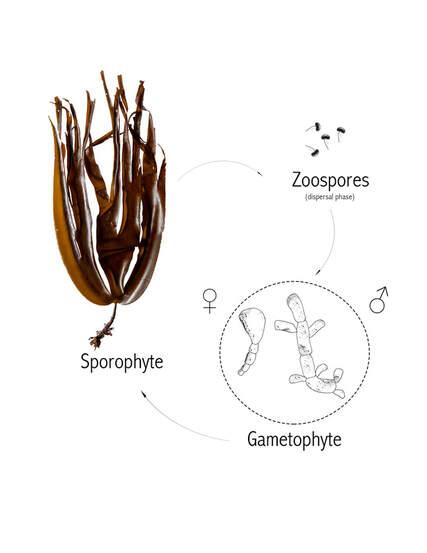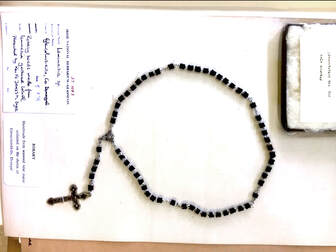KelpRes: the diversity and resilience of kelp ecosystems in Ireland
 KelpRes: the diversity and resilience of kelp ecosystems in Ireland
KelpRes: the diversity and resilience of kelp ecosystems in Ireland
This project is a collaboration between NUI Galway researchers Kathryn Schoenrock (Dept. Zoology), Dr. Anne Marie Power (Dept. Zoology), Dr. Aaron Golden (Biofinformatics and Biostatistics Cluster), University of Alabama at Birmingham researcher Dr. Stacy Krueger-Hadfield (Dept. Biology), the National Biodiversity Data Centre, and SeaSearch Ireland.
The goals of this research are to:
1. Describe historical and present day distribution of Irish kelp ecosystems via academic and citizen science records.
2. Determine the diversity of the main species, Laminaria hyperborea, in subtidal kelp forest habitats.
3. Determine the ability of these populations to regenerate themselves over multiple generations
4. Provide an application for people to record kelp forest ecosystem health and distribution using remote sensing and indicator species.
Find the final report HERE.
The goals of this research are to:
1. Describe historical and present day distribution of Irish kelp ecosystems via academic and citizen science records.
2. Determine the diversity of the main species, Laminaria hyperborea, in subtidal kelp forest habitats.
3. Determine the ability of these populations to regenerate themselves over multiple generations
4. Provide an application for people to record kelp forest ecosystem health and distribution using remote sensing and indicator species.
Find the final report HERE.

The historical to present day distribution of kelp ecosystems in Ireland was estimated by collecting records of Laminaria hyperborea from national herbariums, online data repositories (such as GBIF.org) and older texts on natural history, and published in Ecology and Evolution in 2020.
 Schoenrock et al. 2020
Schoenrock et al. 2020
Genetic structure of over 40 populations is currently under assessment at University of Alabama at Birmingham. We hope to expand upon a previous data set pulished in European Journal of Phycology (2020), and show fine scale variation in allelic richness, rare alleles, and heterozygosity across L. hyperboreas distribution in Ireland, and in comparison to European populations.

Banks of microalgal stages are under investigation using more classic methods in marine ecology as well as metabarcoding. We have just finished a year long experiment in situ and in vivo vestigating whether L. hyperborea gametophytes or juvenile sporophytes are present year-round in benthic biofilms. See new publication on microscopic banks of algal forms here.

Continued monitoring of kelp forests is pertinent along Irelands coastlines. Oean warming is thought to cause the disapearance of L. hyperborea forests from it's southern distribution limit, Portugal. Because of this it is incredibly important to take a modern baseline measurement for presence, diversity, and productivity of these habitats in Ireland and continue monitoring them! We can only do this with the support of recreational divers and dive clubs who have boots on the ground year round and regularly work with Seasearch Ireland. If you would like to contribute to our data base of kelp forest records you can follow this link or scan the QR code and begin!
|
Non-native species
As we cover more of Irelands coastline we discover new species records. This summer Kenan Chan found wakame (Undaria pinnatifida) in Greystones harbour on a dive with Seasearch Ireland, and we continue to scout for Golden kelp (Laminaria ochroleuca) in the west of Ireland. See: Schoenrock, K.M.*, T. O'Callaghan, R. O'Callaghan, and S.A. Krueger-Hadfield (2019). First record of non-native Laminaria ochroleuca Bachelot de la Pylaie in Ireland found in Béal an Mhuirthead, County Mayo. Marine Biodiversity Records. DOI: 10.1186/s41200-019-0168-3 |
